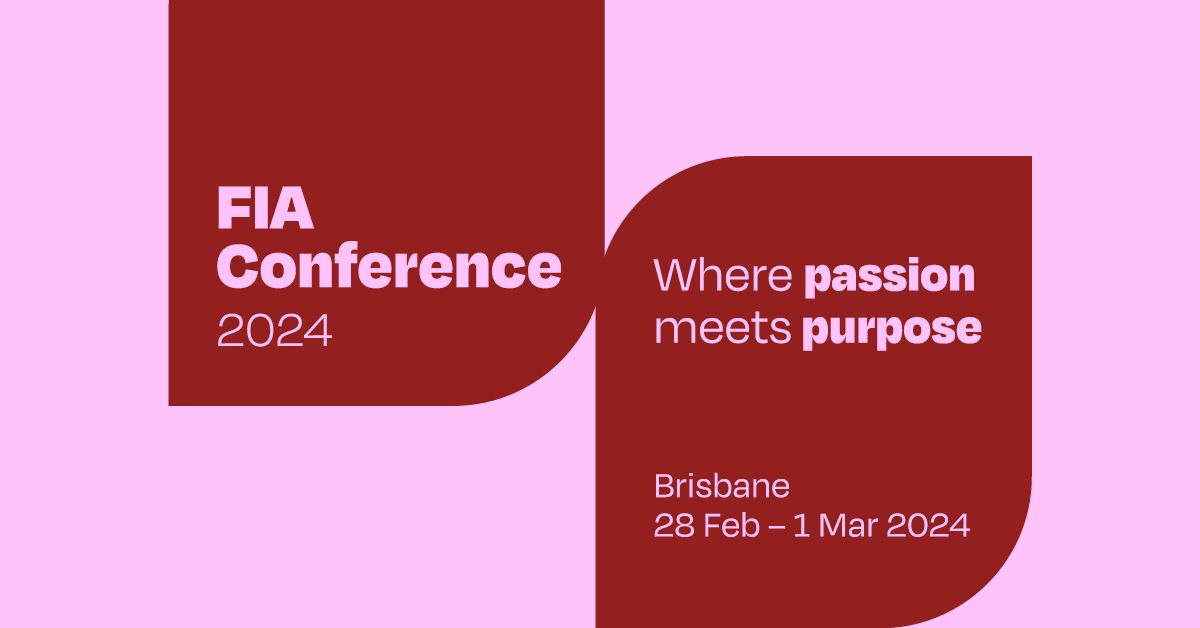The CEO Series: Q&A with Sturt Eastwood, CEO, Diabetes NSW & ACT
The CEO Series: Leadership Observations From The Front Line
For-Purpose leaders are as diverse as the organisations that they lead. Each month I sit down with a CEO where they share their experiences and thoughts on leading a for-purpose organisation. This month I had the pleasure of talking to Sturt Eastwood - CEO, Diabetes NSW & ACT.
For-Purpose leaders are as diverse as the organisations that they lead. Each month I sit down with a CEO where they share their experiences and thoughts on leading a for-purpose organisation. This month I had the pleasure of talking to Sturt Eastwood - CEO, Diabetes NSW & ACT.
 Sturt Eastwood - CEO, Diabetes NSW & ACT, BBus, MBA
Sturt Eastwood - CEO, Diabetes NSW & ACT, BBus, MBA
Sturt Eastwood was appointed as Chief Executive Officer of Diabetes NSW & ACT in February 2014. Diabetes NSW & ACT is Australia’s largest member based, non-profit organisation and is dedicated to supporting the 430,000 people in NSW, living with diabetes through the provision of programs, education, advocacy and research. As a person living with diabetes himself, Sturt is a leading advocate for the support of others living with (and at risk of) diabetes.
Previously, Sturt held senior executive positions, both domestically and internationally for Telstra, Vodafone, Fujifilm and REACH working across fields as diverse as technology, construction, marketing, business development and strategy. He has also held positions on the Boards of Diabetes NSW, Kordia Solutions, Telstra and REACH entities.
Q: CEO’s lead from the front. What are the most important decisions you make as a leader of your organisation?
A: My first response is probably “do they”? Effective leadership is very situational and there are times and issues where leading from the front is important, but equally, there are other circumstances where supporting from within or behind is more appropriate.
In terms of decisions, and this is somewhat independent of industry or business maturity, I have generally made my decisions based on a hierarchy-model including Strategy, Structure, People, Implementation. All of these frames are continually evolving of course and they are all interdependent, but if I had to single out one particular set of decisions, (and this is somewhat a function of the size of the business), it would be the make-up of the executive team.
Q: Culture was identified as a priority for 2018 in the 2017 AICD NFP Governance and Performance Study. How do you help a new employee understand the culture of your organisation?
A: The quick answer is that you make a point of talking about culture a lot. It should come through in the job advertisement, during the interview process, throughout the employee induction, when setting KPI frameworks, communicating staff updates and recognising employees, to name a few. If the cultural “vibe” is present from the very start of the potential employee’s journey with the organisation, every new employee will likely have an inbuilt affinity for, and add positively to, the desired cultural environment. Culture is not a two dimensional poster on the wall, it needs to be lived, it needs to be showcased, and it needs to be tangibly present in all of the various interactions that occur in the workplace.
Q: No business operates in isolation. When you’re considering partnering with another person or business, what factors are deal-breakers for you?
A: There are probably a number of elements I look for in an interdependent relationship of any substance. Although not an exhaustive list, the following are important from my point of view. Firstly, coming together must add something tangible on both sides of the partnership. This could be many things of course from product, channels to market, market expansion, stability, capital and so on. Secondly, the exchange must be fair and measurable in multiple ways. Thirdly, there must be an ability to measure the positive or negative impact on the relationship. Fourth, the ability to exit should never be ignored and fifth, it just has to feel right.
I prefer to work with organisations that are of similar size and cultural identity where possible to give effect to the idea of balance and of course regardless of size, the aims and capabilities of each partner must be clear, realistic and achievable.
Q: Succession planning is key to building a sustainable organisation. How do you choose who to promote?
A: Again, this is a big question. Succession planning is easy in theory but often problematic in practice. In smaller or flatter organisations, (particularly with low turnover) it is often difficult to retain ideal candidates as they generally move on before an appropriate position becomes available. If an organisation has successfully incorporated the LEAN philosophy into its operational levels, then much of the workflow is standardised, systemised and documented meaning succession only becomes an issue for the more senior and ambiguous style roles. I have tended to hire and promote more on aptitude and attitude rather than purely technical skill per se, however, where possible this has been informed by prior experience around the performance of the individual. It is fair to say that where an individual has performed well on one front I have generally provided additional scope to see how they respond. It is also fair to say that people continue to surprise me in both directions regardless of pedigree.
Q: The role of CEO is quite unique. What advice would you give someone going into a CEO leadership position for the first time?
A: There are a couple of points I would probably make given the limited context. They are all obvious comments but it is surprising how often people new to the CEO role rely on assumptions, try to do everything themselves, do too much too fast and create a bow wave of resistance that is unhelpful.
A great starting point perhaps is to be very clear about what the Board expects and keep them very much in the loop during the first couple of months. Build a strong and respectful relationship with your Chair and undertake a forensic business audit to establish an accurate and agreed business performance baseline.
As you work to understand the business in more depth, ask the questions, listen a lot and suspend your opinions. Help the team feel comfortable and take their various perspectives on board. This will provide a platform of knowledge allowing informed and considered decision making when the time comes.
There is always a honeymoon period to some degree so use the time wisely. A new CEO always injects a degree of uncertainty into an organisation and any dislocation requires sensitivity in the initial period.
Having an objective support network can also be very useful. There is an inordinate amount of experience out there that can be tapped. For example, I work with a select group of executives at the NonProfit Alliance where we discuss and explore the issues facing team members in a safe and supportive environment.
Q: What leadership decision are you most proud of?
One answer might be that I don’t know yet as my journey is not finished. However, all things considered and on a personal level, the decision “type” I am most proud of is knowing when, in the interests of the business, it is time for me to move to my next challenge. I am fundamentally a turnaround / growth oriented leader and once next Monday looks like last Monday, there are others more suited to managing status quo. From another perspective, despite the constant funding / revenue pressures, I remain proud of organisational decisions that put mission credibility ahead of easy revenues. Whilst challenging in the immediate term this has proven time and time again to be the most appropriate course of action.
The last comment I would make is that I am always proud of considered structural and strategy decisions made in the interests of the longer term. They are often unpopular at the time but as they say, being an effective leader is not always about winning the popularity contest.
Liska Turner is an executive recruiter that specialises in the For-Purpose Sector. She works with Boards and CEOs to build sustainable organisations through connecting people and ideas. She can be contacted at liska@beaumontpeople.com.au or 02 9279 2777.
Share This blog
Recent Articles









